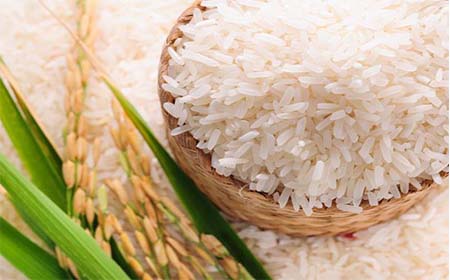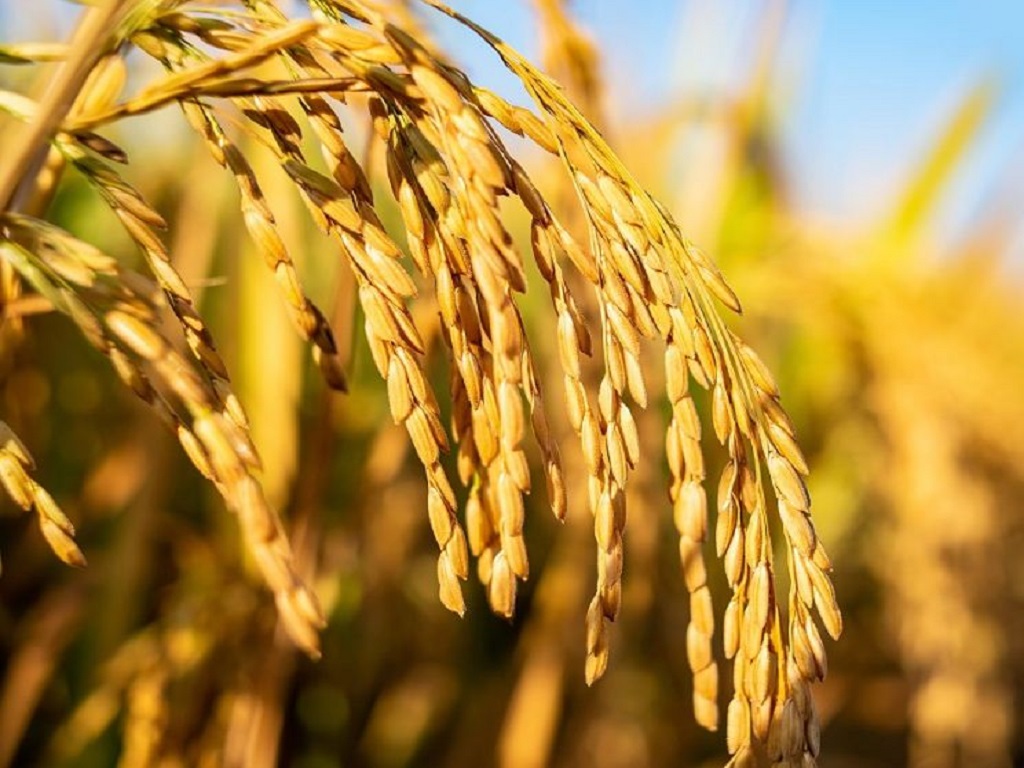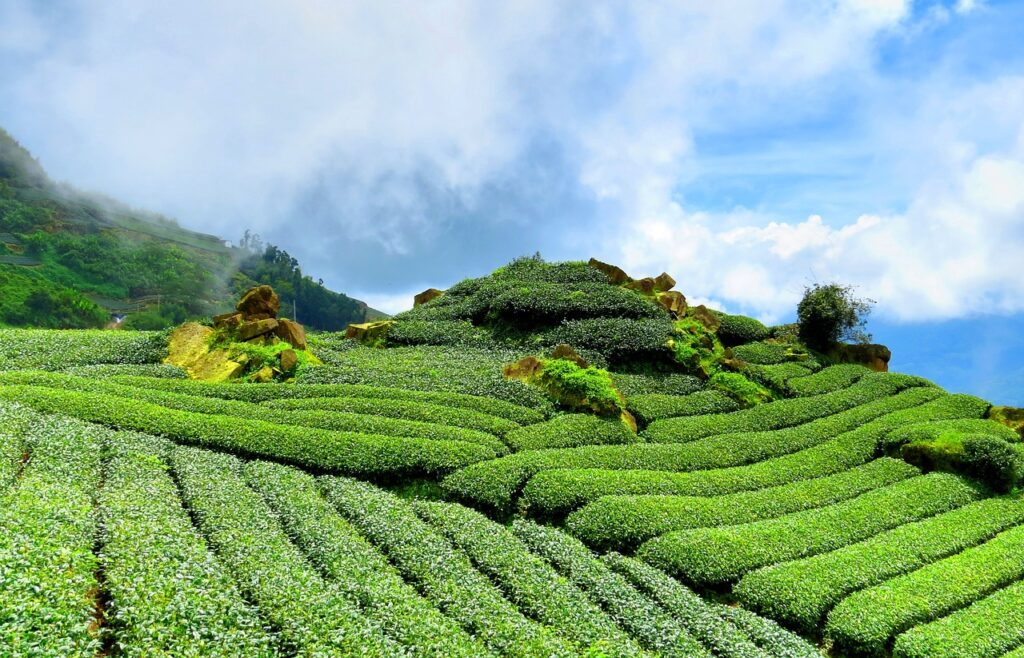Types of Tea
The Tea is produced from the young leaves and leaf buds of the evergreen species, “Camellia Sinensis”. Every variety of tea owns its special art and technique behind its production. Through processing, the shape and chemistry of the leaf are changed. Even though all tea comes from one plant, but there are about 1500 varietals in Camellia Sinensis. These range from small and delicate shrubs to large and ancient wild tea trees. The tea plant is a sub-tropical plant that grows best in acidic soil in a warm and humid environment. A desirable pH value is 5.8 to 5.4 or less is good for tea plantations. The best tea grows on high mountains, in cloudy skies where the temperature fluctuates substantially between day and night.
Camellia Sinensis – Tea Plant Responsible for every Type of Tea
There are over thousands of varieties of tea, each with its specific characteristics. The naming and growing of teas are in many ways similar to wine. Just as Bordeaux wine is named after the Bordeaux region in southwest France and Champagne can only be produced in the northeast France province of Champagne, many teas are also named after the area they are grown in. For example, Assam tea is named after the Assam region in India, and Darjeeling tea is named after the Darjeeling region in India. Like wine, where the tea is grown, the climate, soil conditions, and how the leaves are harvested and processed will altogether determine its flavor characteristics. There are thousands of teas in the world. But as a subject of classification tea has six main varieties.
White, Green, Yellow, Oolong, Black, and pu-erh.
Every tea is different and every supplier has its own unique (and often closely guarded) methods for tea processing. But, every process undergoes the following five steps:
- Plucking,
- Withering (allowing the leaves to wilt and soften),
- Rolling (to shape the leaves and wring out the juices),
- Oxidizing, and
- Firing (ie: Drying).
Although all the above steps are important, the most crucial part, that defines the categories of tea, is Oxidizing. Oxidation occurs when the enzymes in the tea leaf interact with oxygen after the cell walls are broken apart. Through rolling, cutting, or crushing of the Tea Leaves, it can be done quickly or more slowly through natural decomposition. You see the same process in a piece of fruit. Left to sit, an apple will slowly turn brown. Cut or bruise the apple, and it will brown much more quickly. Now, interestingly, if you bake the apple, it will not brown. The lovely, golden-white apple slices inside a pie will look just as fresh as when you first put them in the oven. This is because heat (at or above 130 degrees) stops enzymatic activity and oxidation. Keep that concept in mind for a bit, because we’re going to come back to it.
NOTE: “Oxidation” is still referred to by some in the tea industry as “fermentation”. This stems from an earlier belief that what was happening to the tea leaves was similar to the fermentation of grapes into wine. Everyone now knows this is oxidation, but because of its long history, the term “fermentation” is still used. This is quite common to hear from expert tea professionals in India.
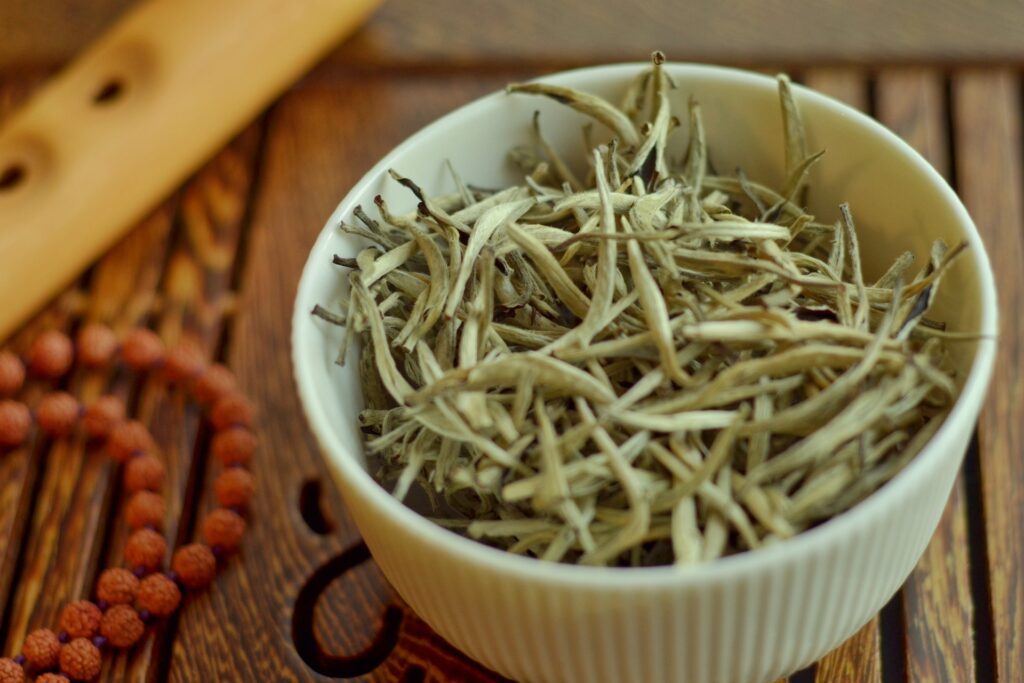
What is White tea?
White Tea is essentially the least processed tea. The name is derived from the fine silvery-white hairs on the unopened or freshly opened buds on the tea bush. This gives the tea a whitish appearance. White tea is simply plucked and allowed to wither dry. In bad weather to dry, leaves may be put into a gentle tumble dryer on very low heat to assist. But the leaves never rolled and shaped. The minimal withering and drying cause a very light natural oxidation range between 5-10%. White teas, therefore, be termed as Tea having a high level of antioxidants, present in fresh tea leaves. White teas produce very pale green or yellow liquor and are the most delicate in flavor and aroma. Good white tea is said to be warm in taste but cooling in nature. White tea is best consumed without any additives at all.
What is Green tea?
Green Teas are not Oxidized at all. The moment tea leaves are plucked, an effort is made to stop any oxidation (0-5%), by using dry heat, known as panning, or steaming. This kills the enzymes that would otherwise have allowed oxidation to take place. This we term as ‘de-enzyme the leaf’ or ‘fixing the green’. Simultaneously, the leaves are shaped by curling with the fingers, pressing into the sides of the wok. The leaves are then rolled and swirled to get countless shapes, each with a unique taste. Finally, we get fully dry leaves through firing. The liquor of a green tea is typically a green or yellow color, and flavors range from toasty, grassy (pan-fired teas) to fresh steamed greens (steamed teas) with mild, vegetable-like astringency.
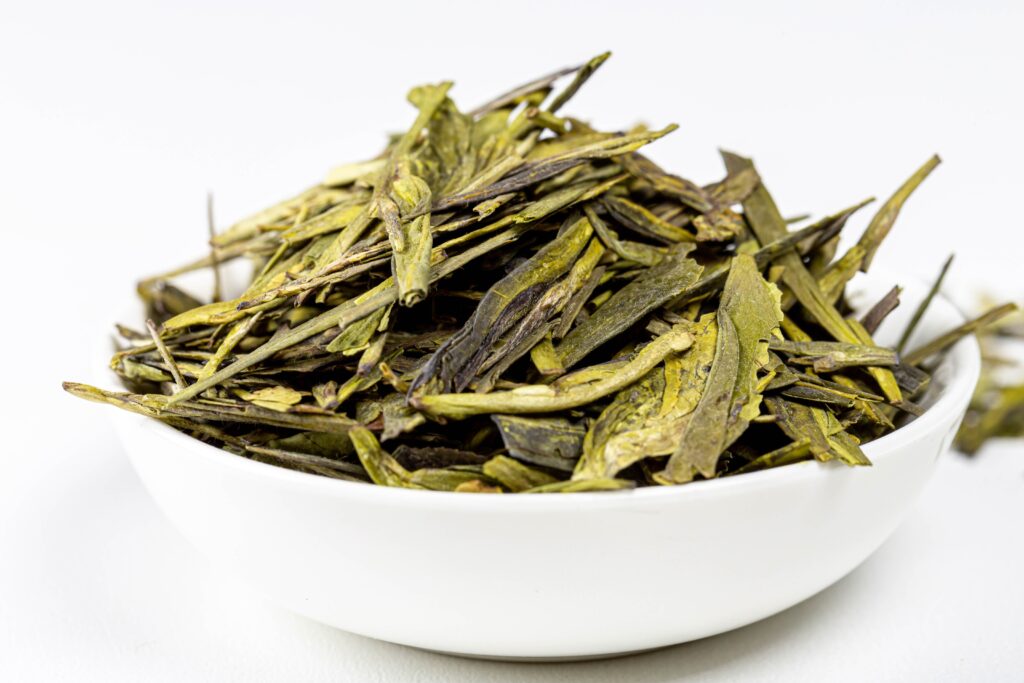
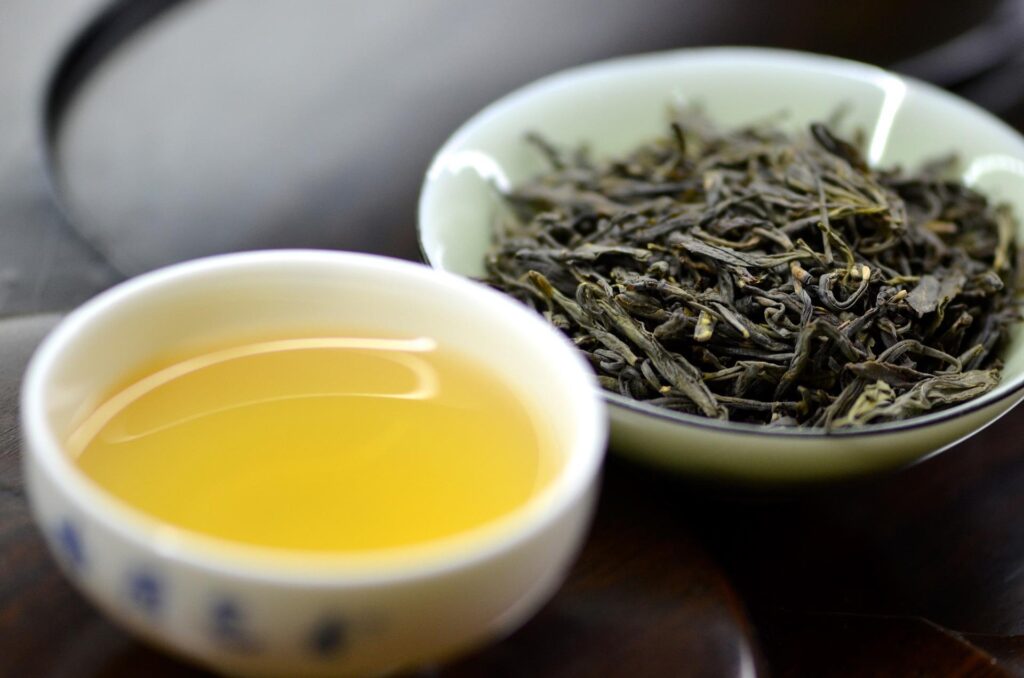
What is Yellow tea?
Yellow tea is rare to the rarest variety that takes its name from its straw-colored liquor. The production process is similar to green tea but with a unique additional step called men Huan, or “sealing yellow”. Since the Yellow color relates to royalty, hence Yellow tea was very popular in China during the Imperial times. The processing technique was thought to be lost forever until it was rediscovered in the 1970s, since then it has been produced in very small quantities. Yellow teas go through a light oxidation stage to mellow and smooth the flavor. After plucking early spring buds or tips, they are pan-fired and wrapped in special cloth or thick paper, a step that is repeated several times over up to three days, gently oxidizing (5-10%) the leaves before the final slow charcoal drying. This smothering process pulls the aromas back into the buds and creates a more aromatic and mature tea, free of the “grassy” taste and astringency found in many green teas. Poor quality green tea is sometimes sold as yellow tea in the international market. Unlike the Chinese way, Korean produces “Yellow tea,” in their own way, somehow similar to oolong tea or lightly oxidized black tea, depending on who makes it – the key feature is a noticeable but otherwise relatively low level of oxidation which leaves the resulting tea liquor yellow in color.
What is Oolong tea?
Oolong (Wu-lung) Tea originates from China and is transliterated from two words meaning “black” and “dragon” in English the name comes from traditional oolongs which have large, twisted dark brown or black leaves that can look exactly like dragons or serpents.
Oolong is the most complicated tea and is partially oxidized on a scale between 10% to 80% and can brew up anywhere from a pale yellow to a rich amber cup of tea. To produce it requires great skill, experience, and time to create the range of flavors, fragrances, and liquor colors that make this tea so special. It utilizes all five basic steps, with rolling and oxidizing done repeatedly. Oolong Tea is halfway between green and black tea. Accordingly, Oolong Tea has the following two varieties:
- Dark brown open-leafed oolongs, up to 80% oxidation;
- Green oolongs, up to 10-30% oxidation.
To produce, Tea leaves are harvested, wilted, and then undergo partial oxidation, depending on the type of oolong, they may be oxidized for only a shorter period or may undergo more thorough oxidation up to 80%, i.e., almost to the level of a black tea. Some oolong teas are then shaped by hand into small, tightly rolled balls before being dried and packaged. Over many hours (sometimes days), what is created is a beautiful layering or “painting” of aroma and flavor.
Oolongs typically have a much more complex flavor than Green or White teas, with very smooth, soft astringency and rich in floral or fruity flavors. Because of their smooth yet rich flavor profiles, Oolongs are ideal for those new to tea drinking.
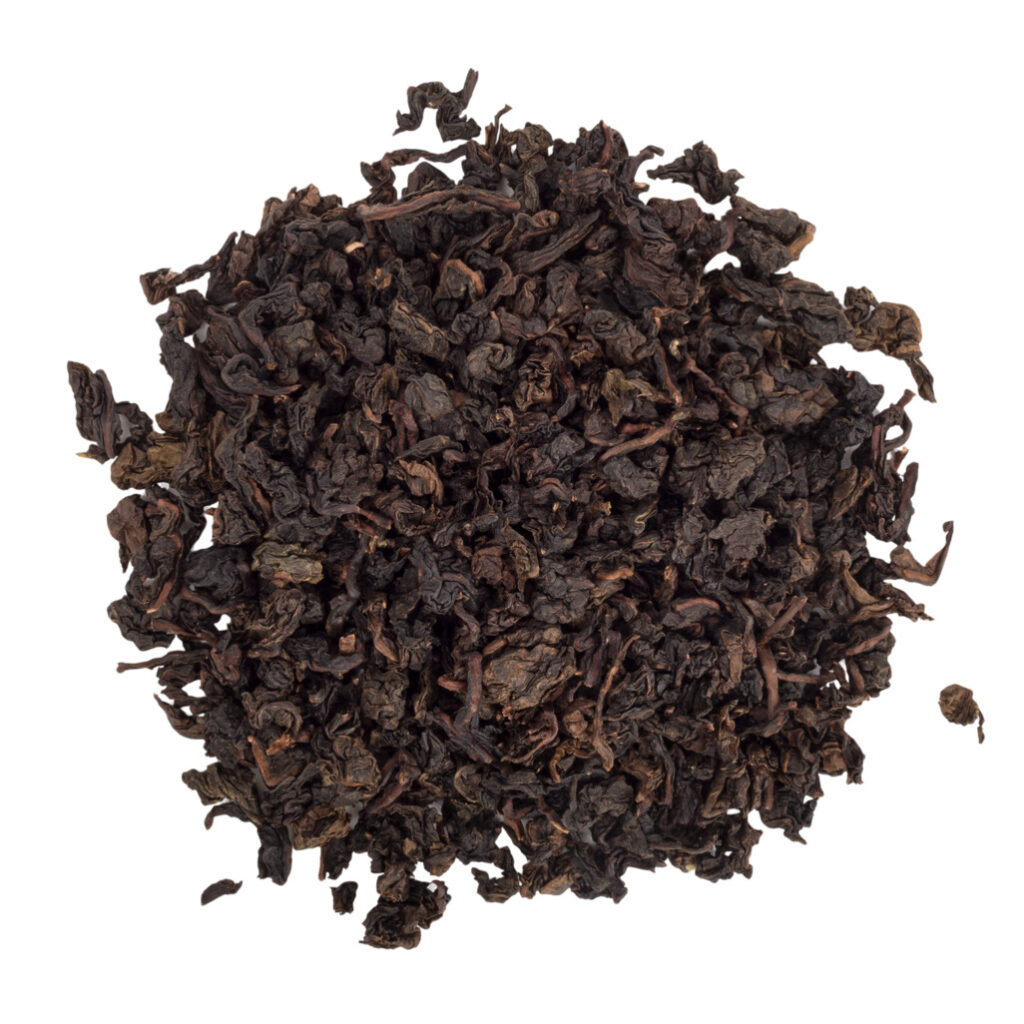
Dark Brown Oolong
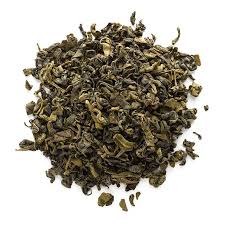
Green Oolong
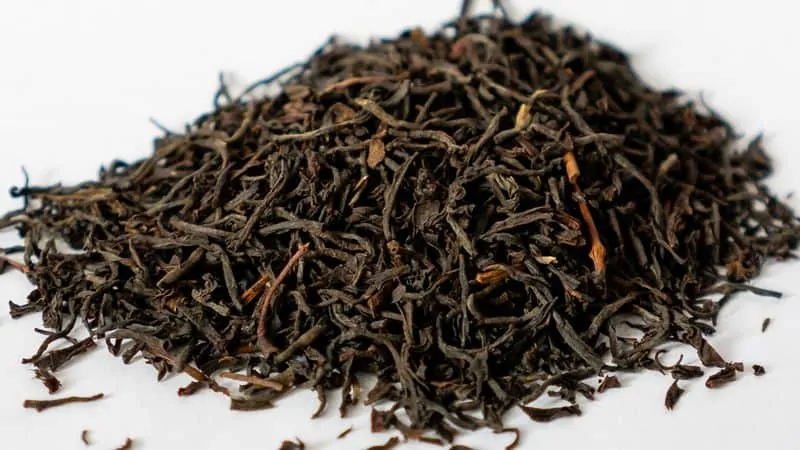
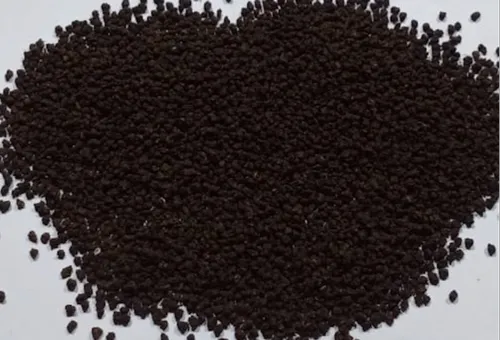
What is Black tea?
Black tea is fully oxidized tea (90-98% oxidation). The people are most familiar with black tea. Black tea is generally stronger in flavor than the less oxidized teas. To make black tea, the freshly-picked leaves are allowed to wither for around 20 hours to evaporate up to 30-35% of the water content. After that, the leaves are rolled or cut to break the cells and provoke oxidation in two different ways of rupturing the leaf cells.
- The ‘ORTHODOX’ method is the traditional way of rolling the tea by hand or machine. This way it breaks and twists the leaf, rupturing the cells and causing the juices to come to the surface and react with oxygen. This style of manufacture gives large, medium, and very small pieces of leaf.
- The CTC (cut-tear-curl) method was first invented in 1930. In this method, the tea leaves are broken up into even smaller pieces. Smaller particles brew faster and give greater color and strength more quickly. This characteristic makes them perfect to put inside paper teabags.
Once the leaves have been rolled or cut, they are allowed to oxidize until the leaves have turned dark brownish-black. To stop any further oxidation and to remove most of the remaining water content, the leaves are put into hot ovens for drying. The tea is completely made within a day. The brewed liquor of Black tea ranges between dark brown and deep red. Black tea offers the strongest flavors and, in some cases, the greatest astringency. Black teas are the only style of tea regularly consumed with milk and sugar (though some dark Oolong drinkers may disagree) and are the most popular bases for iced tea.
What is Pu-erh (pu-ARR or pu-ERR) Tea?
Pu-erh tea, known as “black tea” in the Far East part of the world and can only be grown in Yunnan province of China and is named after the market town in which it was first developed. This tea can be traced back to the Yunnan Province during the Eastern Han Dynasty (25-220CE). Trade in Pu-erh tea began in the Tang Dynasty, became famous during the Ming Dynasty, and was popularized in the Qing Dynasty.
Pu-erh tea is post-fermented, which means that instead of being fermented once, it is fermented twice i.e., goes through a microbial fermentation process after they have been dried and rolled, causing the leaves to darken and change in flavor. This way the teas not only improve with age like a fine wine, but many pu-erhs can retain their freshness for up to fifty years! Pu-erh teas are made from a larger leaf strain of Camellia Sinensis called Dayeh, which are ancient trees having mature leaves that are said to be between 500 and 1000 years old. These trees are usually grown in temperate regions and can be harvested year-round. Still mid-spring is the best time to harvest. Various conditions and environmental factors can impact the flavor profile of pu-erh, resulting in a rich experience for the tea drinker’s palate of this bold tea that can be smooth, fruity, peaty, grassy, musky, herbal, and earthy.
Pu-erh tea can be classified in two different ways: raw (sheng) and cooked/ripe (shou). This classification is made based on processing that occurs after the tea leaves are picked and withered. In raw processing, the leaves are withered and then heaped into piles, much like a compost pile, allowing bacteria to ferment. This step is the most important in the entire process, called “Wo Dui” (moist track). At this point, the character of the tea begins to develop. The leaves are then partially pan-fired to arrest enzyme activity, lightly rolled and kneaded, then left to dry in a “Dry Storage” environment with enough moisture to allow the tea to slowly oxidize over time. Now, the tea is immediately compressed into cakes or left in loose leaf form.
The cooked/ripe processing method was initially developed in the early 1970s by the Yunnan Kunming tea factory to speed up the process of production. In this process, the tea leaves are picked and withered then mixed with a bacterial culture created to replicate the bacteria that would be created during natural fermentation. Then, the pu-Erh is allowed to sleep in a hot and humid environment for up to 40 days till they get fully oxidized, and then it is fired, creating a dark, earthy infusion. During this time, a new way of processing pu-Erh is birthed, half-cooked pu-Erh. This is a mixture of raw and cooked leaves that have been smoke-steamed and pressed, giving the tea a beautiful mixed color of light and dark leaves.
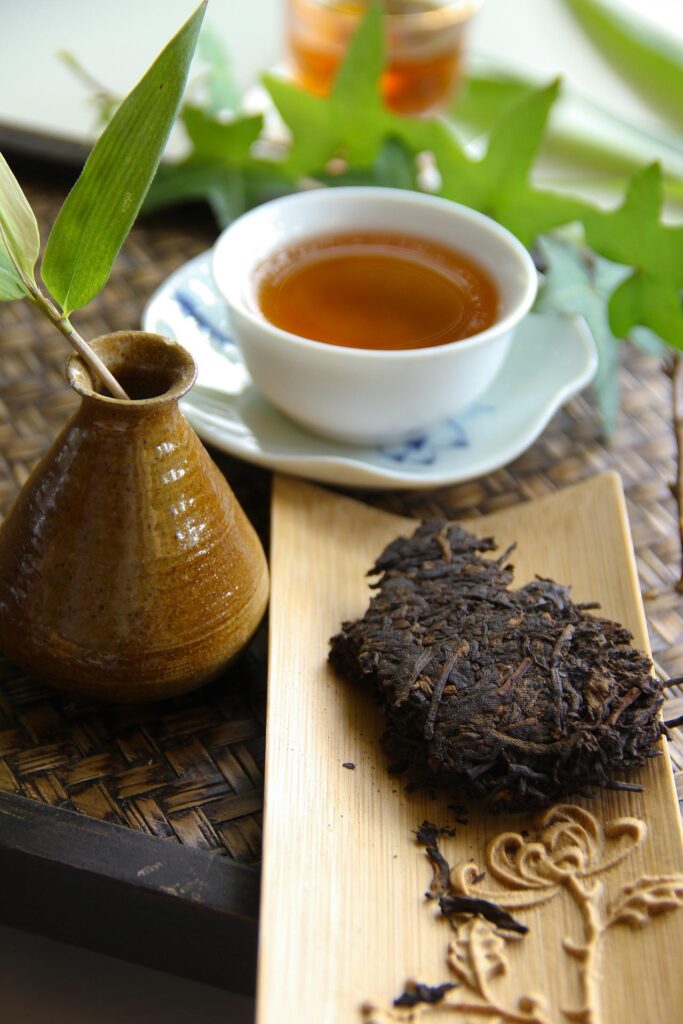
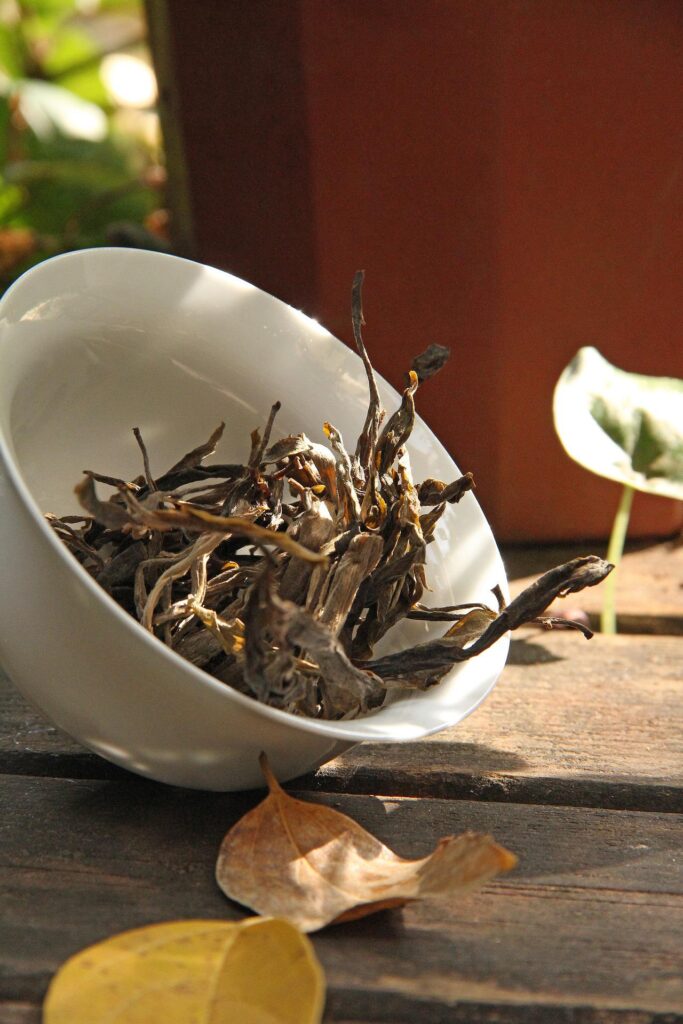
Tea Benefits
White Tea
- As it is a minimally processed tea, it is very rich in antioxidants (catechins).
- It fights oxidative stress and makes you feel good.
- It prevents inflammation and dental problems.
- It makes a good brew for your brain and heart.
Green Tea
- It improves alertness and visual acuity.
- It fights free radicals and guards your body against oxidative stress.
- It improves your brain and heart health.
- It also helps increase the benefits you can leverage from fasting.
Yellow Tea
- The polyphenols in yellow tea fight oxidative stress and protect against heart disease and cancer.
- It helps in diabetes and improves blood sugar control.
Oolong Tea
- Although less popular than its cousins, oolong tea is rich in antioxidants including thearubigins, catechins, and theaflavins.
- It protects your body from the mars of free radicals.
- Like the other members of the True Tea club, it also supports heart and brain health.
Black Tea
- It is good for your heart, gut, and overall health.
- It has exceptional antioxidant properties, which protect your body from oxidative stress due to increased free radicals.
Pu-erh Tea
- It has antioxidant properties.
- It improves mental alertness.
- It is a healthy beverage for your skin and heart.
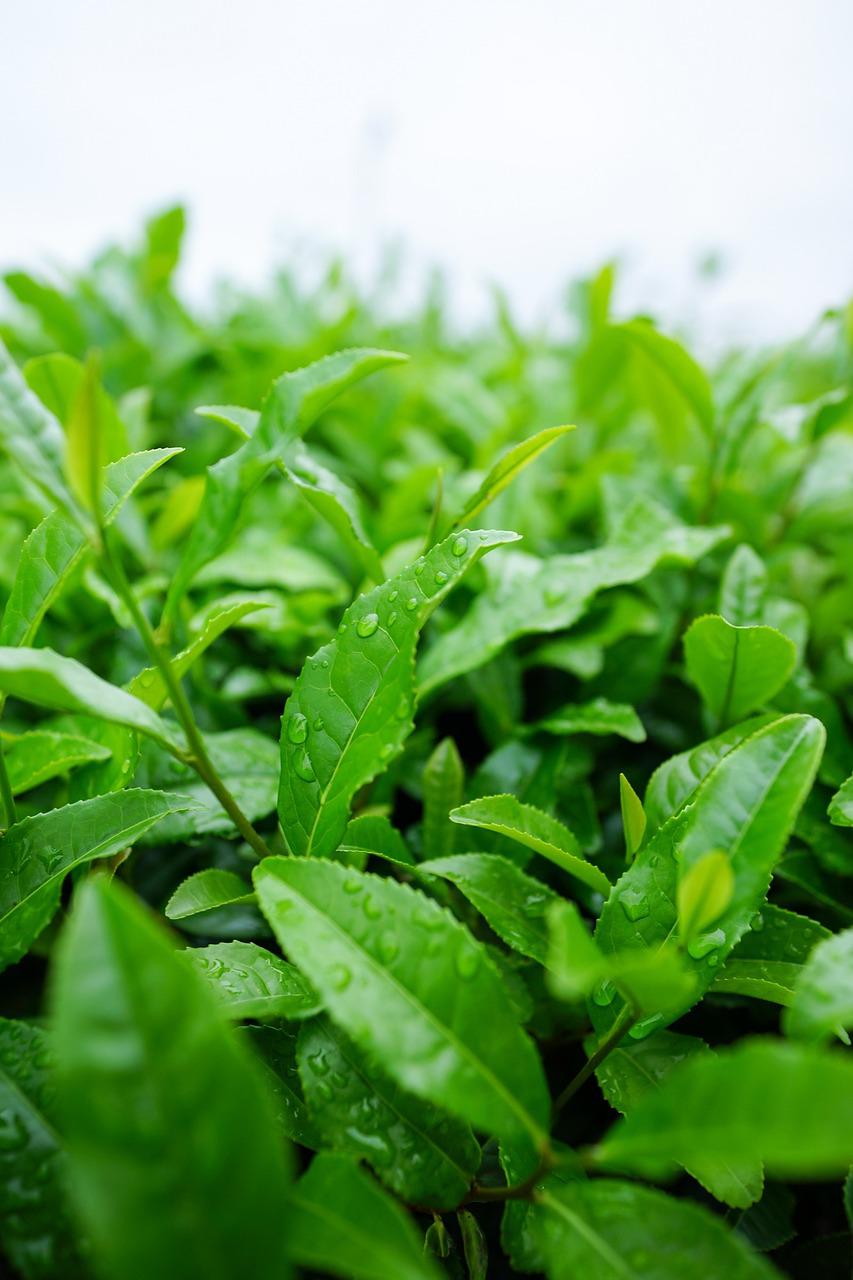
ASSAM | DARJEELING | BLENDED
Your Call to Action Button for TEA
If you have any Query on Tea, then please press the BUTTON below:

